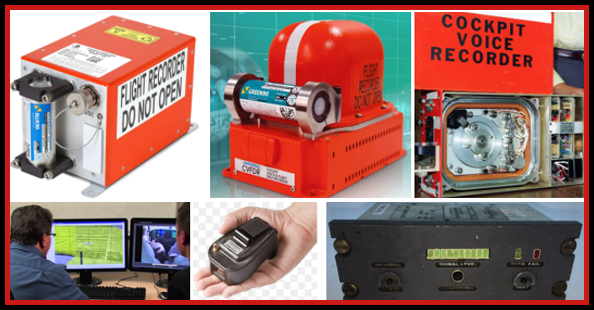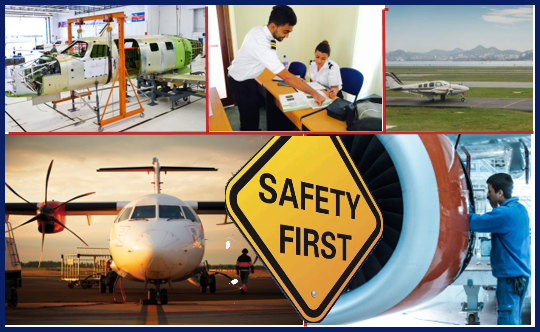
An erudite author has written a detailed analysis of the role that (i) the world’s most sophisticated wind tunnel and (ii) computational fluid dynamics (CFD) are playing in the aeronautical development of the next generation of eVTOLs. Not so WOW, one might say in response to a wind tunnel, but CFD will add to the complexity of design of these advanced aircraft. However, on second thought, a hypothetical conversation might cut to the chase quickly:
an astute observer might provide this tidbit of important insight–
- “yes, as far back as the Wight Brothers, airworthiness determinations relied on this testing element, but the technical capabilities of the RUAG’s Large Subsonic Wind Tunnel in Emmen, Switzerland provide an exponentially larger computational data set…”
- “and, the numbers extracted from those experiments are a quantum leap forward in complexity and sophistication.”
A less sophisticated analyst’s reply–
- “So what?”
The technical cognoscenti completes his thought–
- “Did you read this article? This is not an incremental advance in the field; to understand the aircraft certification tests, the FAA engineers must have command of subjects being taught at MIT or Cal Tech, maybe not even in the classrooms, maybe only in the advanced technology labs. The tests can only be performed in a facility in Switzerland.”
The analyst being educated–
- “So what?”
The instructor–
- “The eVTOL entrepreneurs have drawn timelines under the premise that the review process will be expeditious. Not so, after the Max 8 ODA mess, the TC applicant will have to tutor the FAA staff line-by-line. NOT QUICK!!!”
eVTOL investors, prospective operators of these innovative aircraft, organizations planning to develop the AAM/UAM infrastructure, communities envisioning these vehicles alleviating their surface congestion, the White House/OMB/DOT/NASA/FAA and Hill champions of this new form of air transportation need to cool their jets based on the education required to qualify the certification team to make the airworthiness judgment predicates to issuance of TCs.

The crucial role of wind tunnel testing in advancing aviation
By PAUL EDEN1st November 202310 Mins Read

Textron eAviation’s Nexus wind tunnel model is equipped with powered rotors and wind tunnel testing has collected critical and complex aerodynamic data (Photo: Textron eAviation)
On 17 July 2023, Textron eAviation announced that wind tunnel trials of its new Nexus eVTOL aircraft had begun. The first wind tunnels of modern form began contributing scientific data in the 1870s. The first wind tunnel experiments therefore predate the first successful, controlled, heavier-than-air flight by 30 years or so.

Considering the strides made in computing power over the past few years in computational fluid dynamics (CFD) and related modeling capabilities, the idea of testing a subscale model of a next-generation flying machine in a wind tunnel may seem anachronistic.


In fact, wind tunnel testing is especially relevant to Nexus, as Rob Scholl, president and CEO of Textron eAviation says, “Computational techniques hold a permanent place in our design cycle. But these computational methods are significantly more complicated for rotor-dominated flow fields such as those on our eVTOL.
“Given the interactions between the rotors and the vehicle body, a wind tunnel test is warranted to calibrate our computational tools and confirm our power, stability and drag predictions. It also allows us to tailor and measure maximum wing lift in the presence of rotor interactions, using the near full-scale flow conditions achieved at RUAG. These activities enable design iterations before cutting metal or laying up composites.”

Textron eAviation is using RUAG’s Large Subsonic Wind Tunnel in Emmen, Switzerland. “It offers a 7x5m test section that supports our 23% scale model and an airflow control system that enables us to approximate full-scale aerodynamic conditions. The hydraulic system in the tunnel driving the model’s rotors allows us to achieve the rotor-powered densities required to mimic our full-scale rotor conditions,” says Scholl.
Textron eAviation’s parent company, Bell, has extensive experience in helicopters, beginning in 1943 with the Bell Model 30 and tiltrotors, starting with the XV-3 in 1951. It’s engineers understand the value of wind tunnel testing, especially through recent work on the V-22 Osprey.
Interaction between the powerful downwash from each of the V-22’s proprotors created unforeseen aerodynamic phenomena, affecting aircraft handling and operations with other aircraft on deck or close to the ground. NASA joined prime contractors Bell and Boeing in a series of wind tunnel trials to investigate the issues during the early 2000s.
Recognizing the value of this legacy wind tunnel data and information from other trials efforts to Nexus, Scholl says, “Our tiltrotor, rotorcraft and fixed-wing aircraft testing is directly relevant to Nexus. Test results from these programs provide lessons learned and inform our design approach.
“From these years of testing and certification, we can also balance the cross-discipline interactions of these complex machines to meet certification requirements. We can draw from our internal resources to apply lessons learned, test results, analysis methods and certification strategies to the Nexus design.
“ALTHOUGH THE EVTOL CONFIGURATIONS APPEAR NOVEL, THEY ARE COMPOSED OF AN ASSEMBLY OF COMPONENTS THAT CAN BE DERIVED FROM OUR TILTROTOR, ROTORCRAFT AND FIXED WING LINEAGE.”
…
Why test at all?
The Nexus eVTOL aircraft is an example of a specific configuration with defined trials requirements, but most wind tunnel test programs share similar general aims. Ian Smith, wind tunnel test director at defence company QinetiQ, says, “TYPICAL AIMS WOULD BE MEASUREMENT OF THE LOADS ACTING ON THE AIRCRAFT, PRESSURE DISTRIBUTION AROUND THE STRUCTURE, WITH PARTICULAR EMPHASIS ON THE WINGS, AND CONTROL SURFACES AND THE BEHAVIOR OF THE FLOW FIELD AROUND THE AIRCRAFT.
“Each wind tunnel is designed to cater for a particular wind speed range, which governs the type of testing and to some extent, the type of aircraft that can be tested. Thus, they are generally categorized as low-speed [subsonic], transonic, supersonic and hypersonic.
“Aeronautical wind tunnels are generally used with scale models during the development phase of an air vehicle program because it is cheaper than testing the full-scale article. GROUND-BASED TESTING IS ALSO SAFER SINCE THE PERFORMANCE AT THE EXTREMES OF THE FLIGHT ENVELOPE CAN BE EXPLORED WITHOUT RISKING THE LIVES OF AIRCREW.”
Smith’s remit includes QinetiQ’s 5m (16.4ft) wind tunnel in the UK, which he describes as a strategic asset: “A low-speed wind tunnel, it is designed to investigate the take-off and landing performance of civil and military aircraft, although most of its work is for the civil sector. Demand is high because there are only two like it in the world. It has a large test section and can pressurize the tunnel circuit to three atmospheres, aerodynamically tripling the size of the test article.”

Inside QinetiQ’s 5m (16ft) wind tunnel at Farnborough, UK (Photo: QinetiQ)
A test subject inside QinetiQ’s 5m wind tunnel (Photo: QinetiQ)
From an aerodynamics perspective, Smith says a typical aircraft development cycle progresses through phases. The first phase is concept development, which establishes a baseline shape. This includes computational prediction to reduce the number of shapes requiring experimental and wind tunnel testing to verify the performance of either or both the subassemblies and the complete aircraft.
The second phase is product development, which focuses on aircraft optimization. Here the wind tunnel still generates performance data faster than a computer. Testing encompasses different model attitudes incidence and sideslip angles for example, and configuration and control surface settings.
AERODYNAMICS will then be further considered during prototype production, flight testing and when the aircraft enters service. The aircraft’s propulsion system will undergo a similar process for concept and product development, requiring its own testing and including integration of the engine with the airframe. Smith says, “Simulating the powerplant on a wind tunnel aircraft model requires complex facility infrastructure to drive an engine simulator. The associated expense means it was done as a specialized activity in relatively few wind tunnels. However, advances in electric motor technology have opened the door to simplifying the technique, thereby reducing the cost of doing powered testing and so it is becoming more routine.
“Powered testing is essential in the assessment of novel concepts with multiple power units, including eVTOL aircraft and other advanced air mobility vehicles. The powerplant’s internal workings will still need dedicated testing outside of the wind tunnel though, because this generally only seeks to replicate the entry and exit flows of the powerplant and its effect on the aerodynamic performance of the aircraft.”
Nexus is a perfect example of the type of advanced concept to which Smith refers, and Scholl says eTextron will use the RUAG wind tunnel data to verify the aerodynamic effects of the Nexus vehicle design and control effectors, including rotors, flaperons and ruddervators, across the entire flight envelope and full range of rotor tilt angles. “By measuring these effects, we can discern individual forces and moments of components of our design,” he says.
“Through this process we can confirm, calibrate, and supplement our computational methods. Furthermore, we can then build an aerodynamic database to update our six degree of freedom simulator which enables control law development and handling qualities analysis.
“This coupled aerodynamic database, simulation, and control law set forms the basis to generate certification quality aircraft loads predictions, which then drives our structural design. These activities allow us to push the limits of the design, optimize its capabilities for the mission, and finalize design decisions in our conversion strategy from hover to forward flight.”
The 23% scale model of Textron eAviation’s Nexus eVTOL inside RUAG’s Emmen wind tunnel (Photo: Textron eAviation)
Future tunnels
Considering the continuing importance of wind tunnel facilities, Smith says, “Wind tunnel users are looking to get more for their money from each test entry.
“This means wind tunnels must provide a more comprehensive data set that goes beyond traditional model loads and surface pressure measurements. In particular, modern requirements are for information about the off-body flow field around the model, knowledge of the model shape due to aerodynamic load, and increasingly the inclusion of powerplants to determine their effect on the flow around the airframe.
“These requirements can be met in the wind tunnel thanks to advances in optical measurement techniques and the miniaturization of instrumentation, which means a greater data channel count for a test model. This volume of information is also a prerequisite for validating computational predictions effectively and so it is highly likely that, in the foreseeable future, wind tunnel tests will produce a combination of experimental and computational data that will fully describe the flow field around an aircraft across the whole range of its performance envelope.
“The goal is for this data to have a very high degree of accuracy so that aircraft producers can minimize the amount of expensive flight testing required for aircraft certification.”
The BAE Systems spokesperson says: “Wind tunnels and CFD are complementary methods for testing and evaluating aerodynamic performance. CFD is a very effective tool for early concept development and maturing a design and supports the wind tunnel test phase by generating expected performance, which can inform test points for measurement.
“CFD is well suited to steady-state measurements, but modeling of unsteady or highly turbulent phenomena is an ongoing limitation and source of development. Wind tunnels allow unsteady, challenging, edge of the envelope testing and help progress the development of more intuitive CFD codes.
“Wind tunnels also use advances in non-intrusive measurements that can provide even more data to customers, helping diagnose phenomena that are not always readily seen in conventional force and moment data, or from CFD simulations.”
Smith says, “There is a correlation between the complexity of the airflow and the uncertainty in the accuracy of computational data. This means wind tunnel testing is regularly used to validate computational models. Despite the advances in computer modeling, wind tunnels are therefore still a major contributor to the prediction of aircraft performance.
“In a few minutes, a wind tunnel can produce a data set that would take many hours of computer run time. Add in aircraft configuration changes and it would take the computational team a few years to generate the same data set as that obtained from a month-long wind tunnel test campaign.
“Wind tunnel testing is therefore here to stay, and the current philosophy is more to do with the complementary aspects of computational and experimental data, rather than computational methods superseding wind tunnel testing.”





